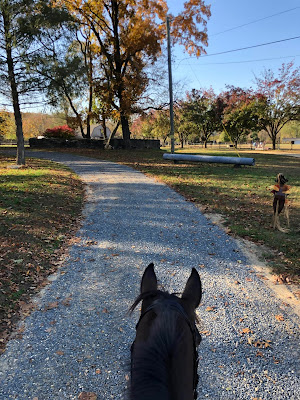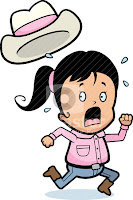Becoming Spicy's Farrier
When Spicy came home, he had front shoes. Since then, we've been playing musical farrier. I don't want to speak ill of the farriers I've used, they are all very skilled in their own right and wonderful people I like, but I just wasn't happy. Spicy has very good, healthy feet. There is nothing unusual about them. Month after month though, I was coming out to loose and missing shoes, flare, and the tripping. Oh my blog, the tripping. I started to wonder what the hell was wrong with him with the incessant tripping that was sometimes so dramatic my breath would catch in my throat.
We got lucky, briefly, and I had a farrier I really liked. The tripping stopped. Then new farrier got hurt and had to retire early (Still not over it. Dave I miss you <333). I finally got fed up with our last iteration of blacksmith and gave up. Or, I guess you could say, gave in. Spicy's fronts were pulled and I vowed to make a more invested and involved effort in his hoof care.
I would like to preface the rest of this post by saying: my approach to hoof care is purely pragmatic. I've had both shod and unshod horses throughout my life. I would rather my horses be barefoot. It's not because it's 'more natural' or 'healthier', but to me barefoot is the Occam's Razor of hoof care. Shoes are just one more thing that can go wrong; I've dealt with sprung, missing, or loose shoes, stepped on nails and jump clips, snowballs in winter and thrushy mud in summer. If I can keep my horse barefoot I will. It'll minimize the shoe-related agony and save me money.
I can't tell you how many barefoot trimmers I called to try and get someone reliable to come trim my horse. Everyone's schedules were full, so I picked up a rasp myself. In the beginning, I was terrified. I would barely take off anything because I was afraid I'd cripple my animal. After removing the tiniest of shavings I'd stare at the hoof, watch him walk, sweat over any unevenness. As the weeks wore on... nothing bad happened. In fact, he felt the best he'd ever felt. No tripping, no chipping, no problems.
After three months of DIY farrier work I got lucky and found a barefoot trimmer who does a fantastic job. I don't touch the hoof as much anymore (just taking off chips and a little bit of heel here and there), but I actually feel confident in my abilities that if something were to happen to my lovely trimmer new I'd be able to keep it up myself.
As far as advice, there are two things I definitely recommend. The first is: watch everything on YouTube, and read the comments, which might be the first and only time I'd say such a thing. There's more than one way to skin a cat, which means there's 900 times as many ways to trim a hoof. Each video had different things I did and didn't like, and the comments had people bickering over different techniques with pros and cons of everything.
 |
| Walking barefoot on gravel! |
We got lucky, briefly, and I had a farrier I really liked. The tripping stopped. Then new farrier got hurt and had to retire early (Still not over it. Dave I miss you <333). I finally got fed up with our last iteration of blacksmith and gave up. Or, I guess you could say, gave in. Spicy's fronts were pulled and I vowed to make a more invested and involved effort in his hoof care.
I would like to preface the rest of this post by saying: my approach to hoof care is purely pragmatic. I've had both shod and unshod horses throughout my life. I would rather my horses be barefoot. It's not because it's 'more natural' or 'healthier', but to me barefoot is the Occam's Razor of hoof care. Shoes are just one more thing that can go wrong; I've dealt with sprung, missing, or loose shoes, stepped on nails and jump clips, snowballs in winter and thrushy mud in summer. If I can keep my horse barefoot I will. It'll minimize the shoe-related agony and save me money.
I can't tell you how many barefoot trimmers I called to try and get someone reliable to come trim my horse. Everyone's schedules were full, so I picked up a rasp myself. In the beginning, I was terrified. I would barely take off anything because I was afraid I'd cripple my animal. After removing the tiniest of shavings I'd stare at the hoof, watch him walk, sweat over any unevenness. As the weeks wore on... nothing bad happened. In fact, he felt the best he'd ever felt. No tripping, no chipping, no problems.
After three months of DIY farrier work I got lucky and found a barefoot trimmer who does a fantastic job. I don't touch the hoof as much anymore (just taking off chips and a little bit of heel here and there), but I actually feel confident in my abilities that if something were to happen to my lovely trimmer new I'd be able to keep it up myself.
 |
| After his last trim. New trimmer is fab. |
As far as advice, there are two things I definitely recommend. The first is: watch everything on YouTube, and read the comments, which might be the first and only time I'd say such a thing. There's more than one way to skin a cat, which means there's 900 times as many ways to trim a hoof. Each video had different things I did and didn't like, and the comments had people bickering over different techniques with pros and cons of everything.
I got this book, which frankly even if you don't want to start trimming your own horse's feet it has so much good information. I found it to be a very easy, enjoyable read. It has fun exercises in it to look at your horse's symmetry, health and movement. It's the perfect balance of scientific and 'For Dummies' that never left me feeling lost.
To start, I used this: The Radius Rasp. If you're terrified of crippling your horse, this is a safe spot to begin. When Spicy's shoes were first pulled his hoof wall was in terrible shape from the nails. The Radius Rasp helped me smooth out the chips. The shape of it means you can use it one handed like a hoof pick. As I got braver, I realized it was useful in mitigating the long toe that has caused all of Spicy's tripping.
Go slow. You can take it off but you can't put it back on. Also, probably wear gloves.
I never thought this was something I would embark on. I'm lucky Spicy has healthy feet and good angles. At this juncture he doesn't need shoes, an endeavor I would never take on myself. If Spicy ends up needing shoes again, I will be back on the hunt for a blacksmith. But for now? He is sound and I am more than happy.






Oh man, I love reading about hooves and trimming and farriery. And I love learning how to do stuff for myself, so thank you for the book and rasp link! I totally agree that barefoot is the way to go if you can, if just because of Occam's razor. (Caveat: assuming the horse has healthy feet and is comfortable barefoot.)
ReplyDeleteI don't think people realize that their horses really can do things barefoot and they can help maintain the hoof between trims safely and easily! After all, it's pretty rare to be able to provide our barn-kept horses with varied turnout to naturally trim their hooves. Maintaining that with a bit of rasping makes life better for everyone, and knowing how to solve problems or recognize a problem makes you a wiser, more proactive horse owner.
I think the other aspect is there is definitely a breaking in period where you pull the shoes off and the horse is a medium amount of sound. It was easy because I was away a lot this summer for a bunch of things, so keeping it light and giving him most of the summer off wasn't a huge inconvenience for me while he transitioned.
DeleteAlso thanks for correcting me on the occam thing *facepalm* I thought I had googled it to check the spelling???
I'm the same as you regarding hoof theory: I do what my horse needs though barefoot is my favorite. I was able to keep Gem barefoot for all the years I rode her except during the 100 miler when I thought it was just too much to ask. I trimmed myself and like you got braver as I went though i was never brave enough to get nippers or a knife. Eeyore's feet suck. They are awful. He has high/low syndrome up front and shitty soles. I tried barefoot and he was miserable. With shoes he is fine so shoes it is.
ReplyDeleteOh god I dunno if I could ever get nippers. sometimes they just need (or don't need) shoes. Runkle didn't have them. Indy NEEDED them, his soles were soooo so thin. Everyone's different!
DeleteI think one day I'd like to learn to shoe my own horses. It'd be so fascinating!
ReplyDeleteeven if I wanted to I'm not sure my back would hold up to it.... maybe I'd shoe something that had a 2" wall and tons of sole??
DeleteYou know I love me a book, hmmm very interesting!
ReplyDeleteThe book was really cool, I learned a lot from it!
DeleteHooves are something I am ashamed to admit I don't know much about. I know what correct and incorrect look like, but no idea HOW to shoe, make corrections, and how movement affects the hoof wear, etc. etc. Great post!
ReplyDeleteThat's kinda how I felt. I know SOOO many things about horses but when it came to farrier work I was so in the dark. I was relying 150% on what my farrier said but of course my farrier thinks hes right - hes the professional doing my horse's feet! I'm not a pro, but similar to basic vet work I'd like to be able to tell the difference between "normal" and "not normal" and what we may need to get there. And when I DO need a professional's help.
DeleteGood for you! Trimming my own horses has made a world of difference in both my wallet and their care over the years. It has made me pay more attention to so many aspects of their care that I may have otherwise overlooked, too. It's crazy what things you don't necessarily think about with regard to hoofcare (tiny changes in nutrition, frequency/type of rides, vaccines, weather swings, etc) can have such a big influence. It's such a cool process to watch the hoof grow and adapt through all of the different environmental changes.
ReplyDelete